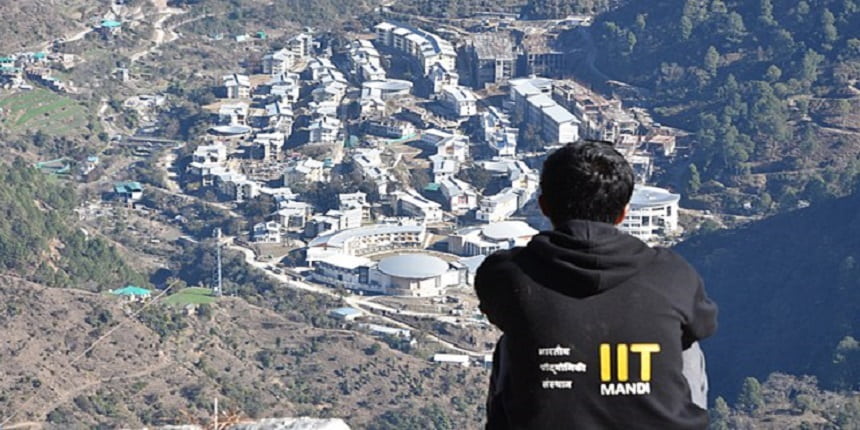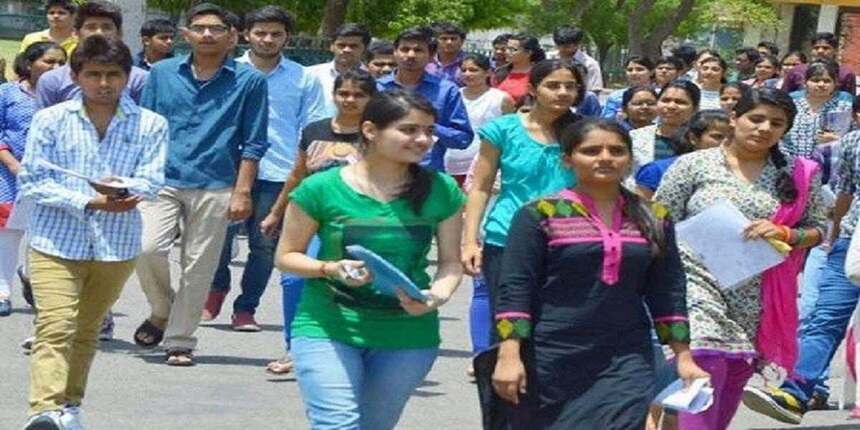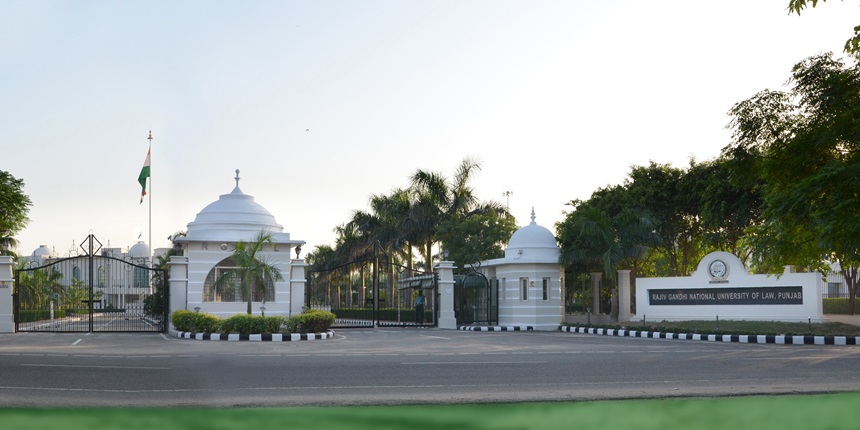‘You will be able to study engineering with music soon’: Siksha ‘O’ Anusandhan VC
Siksha ‘O’ Anusandhan Vice Chancellor the Odisha private university’s progress in NIRF rankings, placements, NEP 2020.
 Siksha 'O' Anusandhan Vice Chancellor PK Nanda said that the university improved its NIRF ranking by focussing on research (Image: SOA)
Siksha 'O' Anusandhan Vice Chancellor PK Nanda said that the university improved its NIRF ranking by focussing on research (Image: SOA)Atul Krishna | July 11, 2023 | 04:21 PM IST
NEW DELHI: Siksha ‘O’ Anusandhan (SOA) has regularly featured in the top 25 universities in India in the education ministry’s National Institutional Ranking Framework (NIRF) lists. Despite being a young university, it had ranked as high as 16th in NIRF’s first university rankings in 2016. Pradipta Kumar Nanda, vice-chancellor of SOA, spoke to Careers360 about the university’s stellar ranking performance, efforts toward improving research and start-up eco-systems and more. Edited excerpts below.
Q. Although young, Siksha ‘O’ Anusandhan has performed well in the NIRF. What do you attribute this to?
A. This performance can mainly be attributed to research and development -- a major component of the rankings. We have also done well on others such as teaching, but I will attribute most to research and development on which we have focussed more in the last 10 years.
We introduced full-time research scholarships. Now, we have 11 research scholars and are paying them Rs 20,000 per month. Then, we also selected good candidates and faculties from IITs [Indian Institutes of Technology] and NITs [National Institutes of Technology], especially in the engineering department. Our library budget right now is around Rs 5 crores.
We have also developed 58 research labs and 18 research centres in the contemporary areas of research. These include nanoscience and nanotechnology, material science, functional materials, health science and pharmacy, infectious diseases, tissue engineering, biomedical science, climate resilient crops, etc. Recently, we have started to focus on agriculture science.
These improved our research ecosystem. We allowed researchers to work through the night like those in national institutions.
Also Read| At Invention Factory, IIT, NIT students step outside their ‘branches’ to solve problems
Also, we encourage researchers to work with faculty from other partner institutions. This enhanced the number of our publications. 10 years ago, we had only around 300 published papers, now we have around 10,000. We have around 300 to 1,600 published papers per year across disciplines. Then, five years ago, we had zero patents and now we have over 420 filed. We are currently running 103 projects worth around Rs 30 crores.
We have started incentivising research with cash awards on publication in reputed journals and asked our faculty to ensure two research publications each year.
Q. You’ve been part of SOA since 2009. How has the university grown since then?
A. There has been exponential growth since 2009 when it was in a very primitive state.
We have established research centres that have predicted the weather and thunderstorms; we have predicted cyclones such as cyclone Fani and our predictions have been accurate.
Now we are focussing on interdisciplinary research. The ecosystem and mind-set of the people have also changed since 2009. Now, we have a heterogeneous faculty from national institutes. We also have adjunct professors and visiting professors. We also have visiting faculty from University of Pennsylvania, University of Cape Town, and from Indian institutes such as IISER [Indian Institute of Science Education and Research] Kolkata.
Q. What are the popular courses that attract students to SOA?
A. Engineering is one. We have postgraduate programmes in sciences such as chemistry and physics; medical science is doing well and agricultural science is doing really well, there is a lot of demand. Except for hotel management, all courses are in demand.
Q. Is there any progress in implementing the National Education Policy (NEP 2020)?
A. We have started working on it. We have registered for the Academic Bank of Credits (ABC). We are working on the multiple-entry-multiple-exit system.
Interdisciplinary centres are being set up. The board has approved the Climate Smart Agriculture Centre. The Biomedical Imaging Centre has also been approved. From 2016, we have been focussed on outcome-based education, experiential learning and participatory learning concepts, which are really working well. We have set up tinkering labs where students can experiment with ideas.
Q. Is there any plan to introduce arts courses?
A. NEP has a multidisciplinary focus with a major-minor concept. The minor could be in yoga, sports, arts, fine arts, etc. We have started the major-minor concept in computer science. As far as NEP is concerned, we are trying to introduce it in a way that some credit will be in yoga, sports, music, etc., for the holistic education of the students.
We are planning to have an Institute of Music and Fine Arts. Students can study engineering with a minor in music once we establish the institute of fine arts and music.
Q. What are the future objectives of the university?
A. Now we work in sync with the current trends of artificial intelligence (AI) and machine learning (ML). We will also work to establish centres of transportation. There are around 10 new centres that I have planned to establish. I also want the university to be in the top 10 institutions in the NIRF and within 500 in the QS Rankings.
Q. What are the challenges the university faces?
A. Currently, the university has 15,000 students and 1,300 faculty members. We have to find more external funds. We have to also really bring in a start-up ecosystem. Attracting foreign faculty is another challenge. We have a few visiting faculty and around 200 foreign students but we want more foreign adjunct professors. Having them on for a year or so is very difficult and expensive.
Q. Is there any particular avenue from which you wish to generate external funds?
A. We are focussing on four or five areas, one is material science, another is agricultural technology. One should focus on solving real problems with an interdisciplinary approach. For instance, Nanoscience is focussing on nanomedicine which we have developed. We are also developing new drugs. Also, agriculture should have smart agriculture which is climate resilient. Similarly, for engineering science, we should have a focus on innovation and start-ups.
Q. Where are the SOA students placed over the past years?
A. The placement is more than 92 percent. Now, we are signing agreements with industries and establishing centres of excellence. We are also accommodating what industries want to create industry-ready students.
In mechanical engineering we have signed agreements with five industries; in computer science, with two.
Also Read| ‘Education should not be elitist’: Ahmedabad University Chancellor
Although the placements are good, we now need quality placements. Currently, while the highest placement package goes to around Rs 34 lakhs per annum, the average placements are only around Rs 5-6 lakhs.
Q. In April this year, there were reports that some students got fake placement letters. Has the university taken any steps to address this?
A. That happened in 2017. I’m not aware of any such issue this year.
Now we have a new group of people who are handling the placements under the direct supervision of the university. We have not only set up a placement cell but introduced career counselling, and set up faculties in charge of this. Earlier, we had a single point-of-contact that created that issue. Now, multiple people have been given multiple responsibilities.
Follow us for the latest education news on colleges and universities, admission, courses, exams, research, education policies, study abroad and more..
To get in touch, write to us at news@careers360.com.




